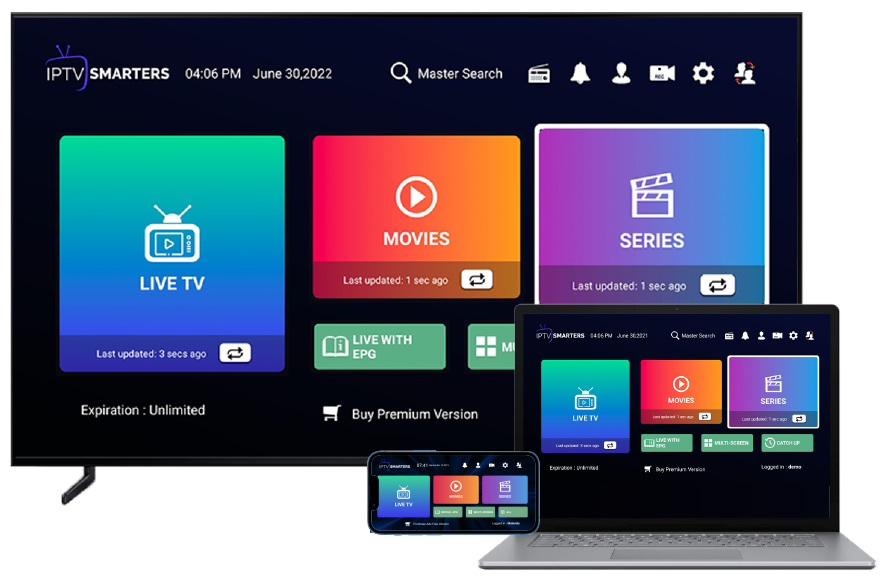Boost Your Watching Experience: IPTV Subscription with Substantial Channels
Boost Your Watching Experience: IPTV Subscription with Substantial Channels
Blog Article
Just How IPTV Functions: A Step-by-Step Guide to Net Procedure Television Modern Technology
Internet Protocol Television (IPTV) has reinvented the way we take in tv content, providing a brand-new realm of opportunities via the power of the internet. Recognizing the intricacies of just how IPTV works can shed light on the modern technology that drives this innovative type of media shipment. From the essential concepts of IPTV to the complex process of web content delivery, each step plays a vital function in making sure a seamless viewing experience. In this overview, we will certainly reveal the hidden devices that make IPTV a remarkable blend of innovation and amusement.
IPTV Basics
In understanding IPTV fundamentals, it is essential to understand the essential functions of this innovation in providing television material over the internet. IPTV, which means Web Procedure Tv, utilizes Net Protocol (IP) networks to send television content to customers' tools. Unlike typical approaches of relaying tv material with wire or satellite signals, IPTV streams media via high-speed web connections.

Moreover, IPTV permits interactive capacities, such as video as needed (VOD) and electronic program guides (EPG), improving the user experience by providing more control and versatility in accessing web content. On the whole, comprehending the fundamentals of IPTV establishes the structure for exploring its advanced capabilities and the benefits it provides to contemporary tv consumption.
Web Content Delivery Process
Efficient web content distribution in IPTV systems involves a well-structured procedure that ensures smooth transmission of tv content over IP networks. The web content distribution procedure in IPTV starts with the development of the video clip material, which is then inscribed into electronic format appropriate for IP transmission. This inscribed material is then firmly kept on servers called media web servers. When a visitor requests certain material, the IPTV system retrieves the asked for information from the media servers and provides it to the visitor's gadget over the web.

Middleware Capability
With the assimilation of middleware, IPTV systems gain enhanced functionality that streamlines customer communication and content monitoring. One of the essential functions of middleware in IPTV is to make it possible for tailored user experiences by offering features such as interactive program overviews, video-on-demand solutions, interactive advertising and marketing, and customer preferences administration.

Device Compatibility
Provided the critical role of middleware in enabling seamless interaction and web content administration in IPTV systems, an essential facet to think about is the compatibility of devices used for accessing the IPTV solutions. Device compatibility is vital for making sure a smooth customer experience and optimal performance when accessing IPTV content.
In the context of IPTV, gadget compatibility refers to the capacity of a device to properly connect with the IPTV service, display content properly, and support the required protocols and codecs for streaming video clip web content online. view Various tools, such as clever Televisions, set-top boxes, smartphones, tablet computers, and computers, might have differing levels of compatibility with IPTV solutions.
To make sure a seamless viewing experience, it is essential for users to select tools that are suitable with the certain IPTV solution they are utilizing. Additionally, IPTV solution carriers should use support for a wide range of tools to accommodate the varied needs of their user base. By focusing on tool compatibility, both individuals and solution suppliers can enhance the general IPTV experience.
High Quality of Service (QoS)
Considering the essential duty of keeping a high requirement of efficiency Source and reliability in IPTV systems, making sure consistent Top quality of Solution (QoS) stays a fundamental aspect of the user experience. QoS in IPTV refers to the capability of the system to supply material with minimal interruptions, high resolution, and fast packing times.
Provider utilize QoS systems such as web traffic prioritization, buffering, and error modification to preserve a steady IPTV service. By focusing on IPTV website traffic over much less time-sensitive information, providers can make sure smooth playback also during optimal use hours. Buffering helps make up for network variations, while mistake correction strategies improve data stability.
Constant surveillance and optimization of QoS specifications are necessary to adapt to transforming network conditions and individual demands. Eventually, a robust QoS structure is vital for supplying a smooth and delightful IPTV experience to users.
Conclusion
To conclude, IPTV operates with the transmission of tv material over you can try here web procedure networks. The innovation involves a systematic process of content shipment, promoted by middleware functionality to guarantee compatibility across numerous gadgets. Quality of Service plays a critical duty in preserving the effectiveness and integrity of IPTV solutions. Understanding the basic principles of IPTV is necessary for realizing the intricacies of this innovative tv innovation.
Report this page